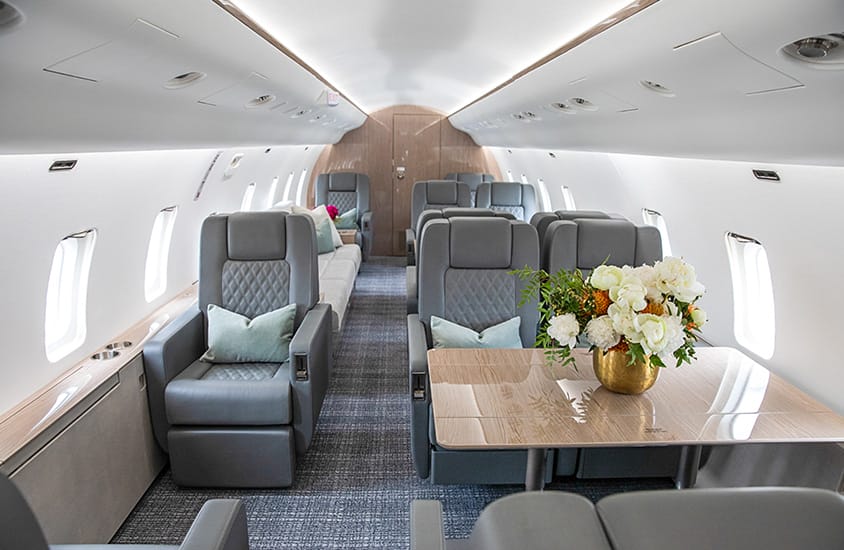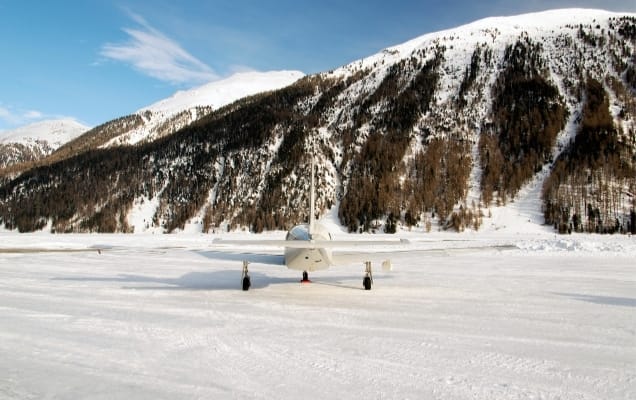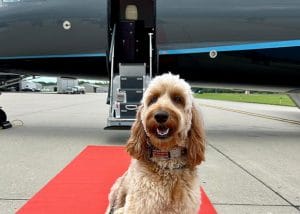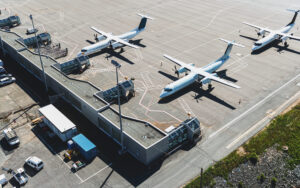Winter weather can make private jet travel more complex, especially when holiday flight volume coincides with freezing temperatures. When every minute counts, an unexpected private jet de-icing delay or bill may feel inconvenient, but it’s also one of the most critical safety measures in aviation.
“De-icing is essential to maintaining lift, stability, and control in cold conditions,” says Christian Schaible, Senior Director, Safety & Joint Operations at Magellan Jets.
To ensure your journey is as smooth as possible, Magellan Jets works proactively to anticipate weather challenges. For total peace of mind, Magellan also offers De-Icing Insurance to new and existing Jet Card Owners, protecting you from unexpected winter costs.
Understanding Private Jet De-Icing

Before takeoff in icy or snowy conditions, aircraft are treated with specialized heated fluids that remove and prevent the accumulation of ice. This process ensures the wings, nose, and tail surfaces remain free of buildup that could impact safe flight performance.
The decision to de-ice is always made by your flight crew based on real-time safety assessments. You may be asked to deplane during the procedure for comfort and safety.
The entire process can take 30–60 minutes, though timing depends on:
- Type and rate of precipitation
- Ambient temperature and wind direction
- Aircraft size and configuration
- Queue time on the de-icing line
- Airport capabilities
“Even if your aircraft starts the day in a warm hangar, exposure time is critical,” Schaible explains. “If you’re the fifth or sixth jet in line waiting to take off, you can ice up again while taxiing and sometimes have to repeat the process.”
Why Private Jet De-Icing Can Be So Expensive
De-icing costs vary depending on the aircraft size, the FBO, and the chemicals used, but can reach $10,000 or more in certain conditions.
“The fluid itself is extremely expensive,” notes Schaible. “And every airport must capture and manage the chemical runoff safely, which adds to the cost.”
Airports are required to comply with strict environmental standards for de-icing operations. Many designate specific de-icing pads or use collection systems to contain used fluid, all of which increase operational costs.
How Magellan Jets Minimizes De-Icing Delays and Costs
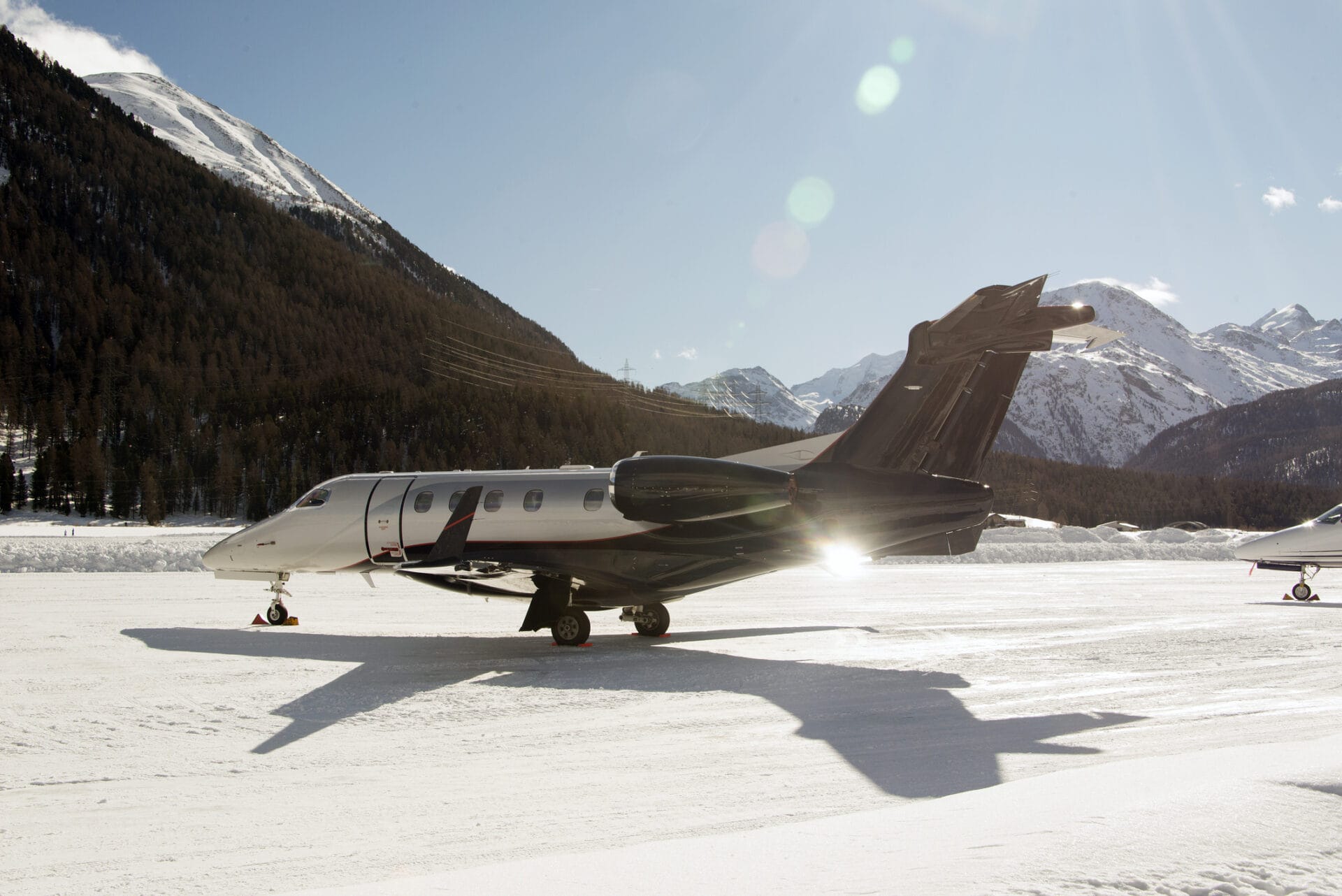
Magellan Jets’ Client Experience and Flight Operations Teams are trained to anticipate winter weather disruptions and reduce your risk of costly de-icing events.
Warm Hangar Storage
Whenever possible, Magellan positions your aircraft in a heated hangar overnight to prevent ice buildup. Although hangar fees apply, they’re often far less than de-icing costs and save valuable departure time.
“Keeping a jet warm overnight saves money and reduces taxi delays,” Schaible says. “It’s a small investment that pays off in both safety and schedule reliability.”
Pre-Positioning and Flight Planning

Magellan’s Flight Operations experts may pre-position aircraft outside snow and ice zones, plan alternate routes, or recommend slight adjustments to your departure time.
During peak holiday travel, high-traffic destinations like Aspen, Colorado and the Caribbean often experience long delays due to limited runway and parking capacity.
“In ski country and the Caribbean, everyone wants to arrive at the same time,” Schaible explains. “If you file your flight plan early, you might only see a 4–6 hour delay. File the same day, and it could become a 20-hour delay.”
Monitoring Wind and Jet Stream Conditions
Changing jet stream patterns can affect routing and travel time in winter months. Magellan’s operations team constantly monitors atmospheric data to identify safe, efficient flight paths.
Selecting the Right Airports
Larger airports like Boston or Chicago have full de-icing fleets and advanced snow removal systems. Smaller regional airports, however, may lack these resources.
“Some small airports don’t have full snowplow fleets,” Schaible notes. “Sometimes it’s literally one guy with a pickup truck clearing the runway, and that can delay departures.”
Your Private Aviation Advisor can recommend alternate airports with better winter infrastructure when conditions call for it.
Protecting Your Flight with De-Icing Insurance
When flying on-demand, any de-icing required for your trip will be billed to you. However, Magellan Jet Card Owners can purchase De-Icing Insurance, ensuring zero out-of-pocket de-icing costs for the entire duration of their Jet Card term.
De-Icing Insurance is priced by jet category and starts at $2,500 per 25-hour block.
Current Private Clients can contact their Private Aviation Advisor for more information, while new Private Clients can add De-Icing Insurance through Magellan’s Build-A-Card Tool or by asking an Advisor.
Winter Flying Tips from Magellan Jets’ Safety Experts
Even with the best planning, winter weather can be unpredictable. Follow these expert tips to protect your schedule and reduce stress:
1. Plan Ahead for Delays
Expect possible weather-related disruptions, especially at high-altitude or congested airports. Build buffer time into your itinerary.
2. Share Your Travel Details
Your Client Experience and Flight Operations Teams can plan better when they know your full itinerary, number of passengers, and any flexibility in your travel schedule.
3. Book Early
Aircraft availability is limited during the holiday season. Booking in advance allows Magellan to pre-position aircraft and prepare for weather events.
4. Arrive Early
In cold weather, the longer an aircraft sits outside, the greater the risk of icing. Arriving early helps reduce exposure and unnecessary de-icing.
5. Stay Connected
Magellan’s Flight Operations Team monitors weather 24/7 throughout the winter. They’ll keep you updated, recommend alternates, and guide you through any necessary adjustments.
“You can’t eliminate every weather issue,” Schaible says, “but your Private Aviation Advisor can help you anticipate and mitigate them for a smoother experience.”
Private Jet De-Icing: Frequently Asked Questions (FAQ)
What is private jet de-icing?
Private jet de-icing removes ice, snow, and frost from aircraft surfaces using heated, specialized fluids to ensure safe takeoff and flight performance.
Why does de-icing take so long?
De-icing depends on weather, aircraft size, and airport resources. Wait times can increase if you’re queued behind other aircraft or if re-application is required due to exposure.
How much does private jet de-icing cost?
Costs vary by airport and aircraft but can range from $2,000 to $10,000+ per occurrence.
Can de-icing be avoided?
Yes, in certain situations. Hangaring, early departures, and pre-positioning aircraft away from snow zones can reduce or eliminate the need for de-icing.
Which airports experience the most de-icing delays?
Popular winter destinations like Aspen (KASE), Vail (KEGE), and Teterboro (KTEB) can experience major congestion and weather-related delays.
What does Magellan’s De-Icing Insurance cover?
It covers all de-icing fees for Jet Card Owners for the duration of their Jet Card term, ensuring predictable winter travel costs.
Contact Magellan Jets
For personalized winter travel planning, de-icing protection, or to speak with a private aviation expert, contact a Private Aviation Advisor.
About Christian Schaible

Christian Schaible is the Senior Director, Safety & Joint Operations at Magellan Jets. A former military helicopter pilot and drone operator, Christian brings extensive expertise in program management, risk analysis, and mission execution to his role. At Magellan Jets, he applies his operational insight and disciplined approach to deliver seamless, secure travel experiences for Private Clients across every season.
